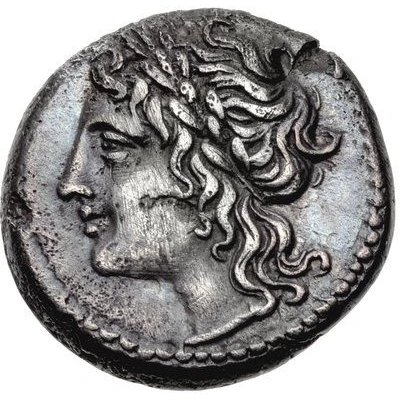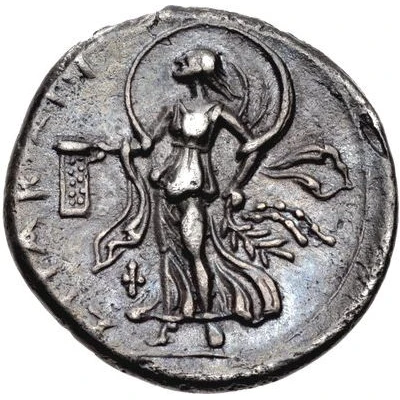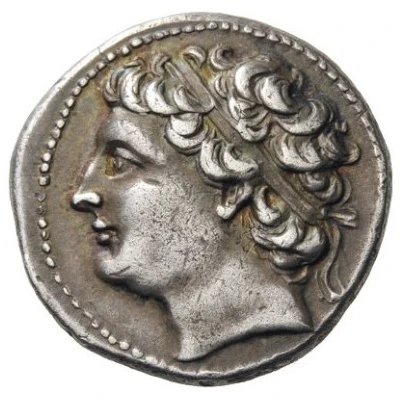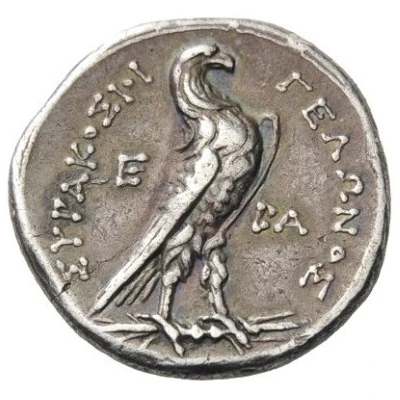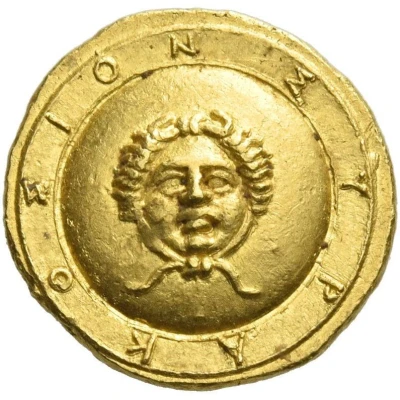
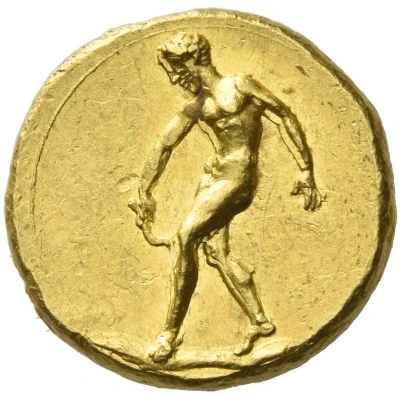

Tetralitron 466 BC - 405 BC
| Gold | 3.48 g | 14.5 mm |
| Issuer | Syracuse (Sicily) |
|---|---|
| Type | Standard circulation coin |
| Years | 466 BC - 405 BC |
| Value | 4 Litrai |
| Currency | Litra |
| Composition | Gold |
| Weight | 3.48 g |
| Diameter | 14.5 mm |
| Shape | Round (irregular) |
| Technique | Hammered |
| Orientation | Variable alignment ↺ |
| Demonetized | Yes |
| Updated | 2024-10-10 |
| Numista | N#398501 |
|---|---|
| Rarity index | 100% |
Reverse
Ephebe moving left, nude, leaning slightly forward with his left foot turned outward towards the viewer and his right balanced on his toes, his left hand held behind him as a counterweight while using a strigil, held in his right, apparently to clean off a mixture of oil and dust from his left knee.
Comment
C. Boehringer, "Ehrenrettung einer syrakusanischen Goldmünze", FlorNum p. 74, 1; C. Boehringer, "Zu Finanzpolitik und Münzprägung des Dionysios von Syrakus", Essays Thompson pl. 38, 11; SNG ANS -; SNG Lloyd -; SNG Copenhagen -; Jameson -; Rizzo -; Gulbenkian -; Pozzi -; Weber -.
Only eight specimens known, three are in private hands.
Interesting fact
The Tetralitron coin from Syracuse (Sicily) is interesting because it features a unique blend of Greek and Sicilian influences in its design. The obverse side of the coin depicts the head of the Greek goddess Athena, while the reverse side features a four-horse chariot, which was a common motif in Sicilian coinage at the time. This blending of cultural influences reflects the rich history and cultural exchange that occurred in the ancient Mediterranean world.
Price
| Date | Mintage | VG | F | VF | XF | AU | UNC |
|---|---|---|---|---|---|---|---|
| ND (466 BC - 405 BC) | - | - | - | - | - | - |
Values in the table are based on evaluations by sales realized on Internet platforms. They serve as an indication only for Tetralitron (466 BC - 405 BC) coin.
